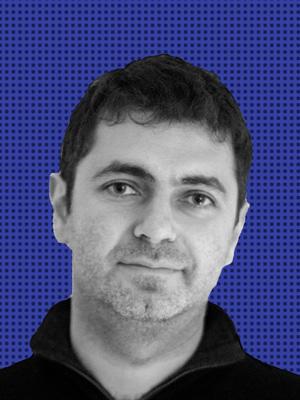What is the subject of your research at Inria?
I am working on developing more efficient and more secure public-key cryptography schemes*. The protocols used today, based mostly on factoring and discrete log, risk becoming vulnerable in the next decade or two due to the advent of quantum computers. We therefore need to develop alternative schemes that will allow for confidentiality and authenticity of communication even in the presence of attackers who are in possession of these extremely powerful devices. But we should still be able to integrate the new security solutions into standard computers and low-power smart cards.
What will these new systems be like?
Lattice cryptography protocols look very promising. They are based on linear algebra, and have the potential to be faster and more secure than protocols based on traditional number theoretic problems such as factoring. A great deal of research is still needed to make these schemes efficient-enough to be implemented everywhere and strong enough to withstand attacks by next-generation computers. This is the project submitted in my application for an ERC grant.
What does this grant mean for you?
It is very nice to know that the scientific community thinks my research subject is interesting enough to award considerable funding for it. Thanks to this grant, I will be able to recruit more doctoral researchers, post-docs, and organise workshops focusing on the area.
As a scientist, what attracted you to this field of research?
The field I work in draws on many different branches of mathematics: abstract algebra, number theory, analysis, and information theory, to name but a few. In addition, we need to design efficient schemes that can be integrated, in terms of software and hardware, into various kinds of IT devices. So there is always something more to do and something new one can learn. I am also motivated by the prospect of knowing that my work will result in concrete applications. When quantum computers become real, the world will have to switch to cryptography with stronger security. It is therefore essential to start planning for this now, and propose an alternative that people can trust.
* Public key cryptography allows for secure communication between parties that meet for the first time. Thereceiver creates two keys – one public (which he publishes for all to see) and one secret (which he keeps to himself). The sender can then use the receiver's public key to encode a message which only the receiver can decode using the secret key. The link between the secret and public keys, which allows for encoding and decoding, exists thanks to the algebraic properties of some mathematical objects. The security of the communication, therefore, relies on the hardness of solving certain computational problems involving these objects.
Bio express
Born in 1980 in Kiev, Ukraine, Vadim Lyubashevsky immigrated to the United States in 1989, where he acquired US nationality. After studying Mathematics and Computer Science at Columbia University (New York), he completed his PhD at the University of San Diego in California. Vadim Lyubashevsky began his career as a Post-Doctoral Researcher at the Department of Computer Science at Tel-Aviv University (Israel) and then joined the Inria Cascade team, attached to the Computer Science Department at the ENS in 2010. He served on 14 international conference program committees on cryptology and published many papers on this subject in the specialised press. In 2012, he received thePrime d’Excellence Scientifique (Scientific Excellence Award) granted to the best researchers at Inria.
